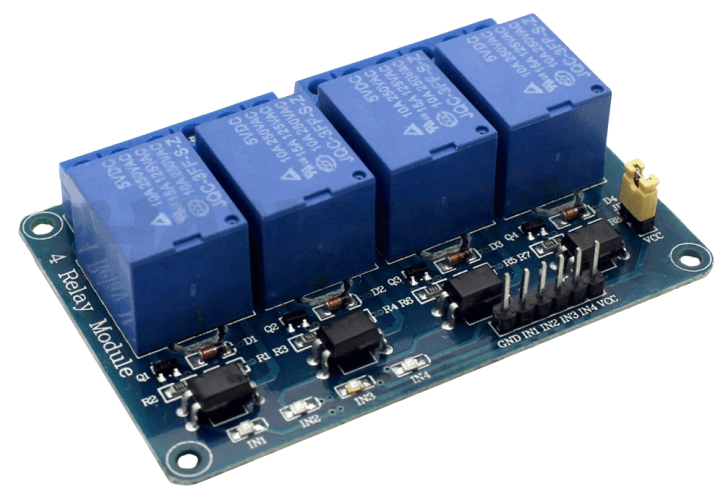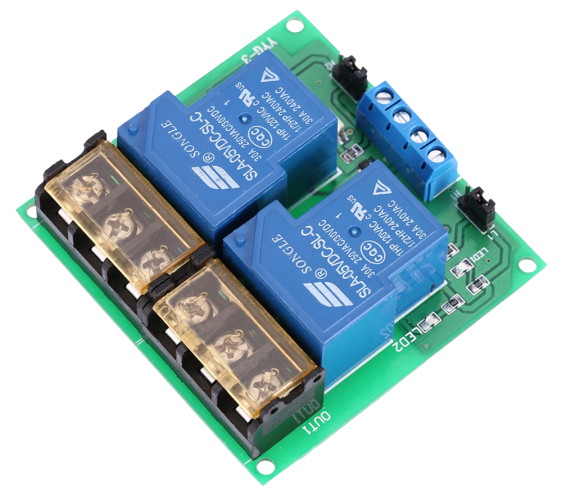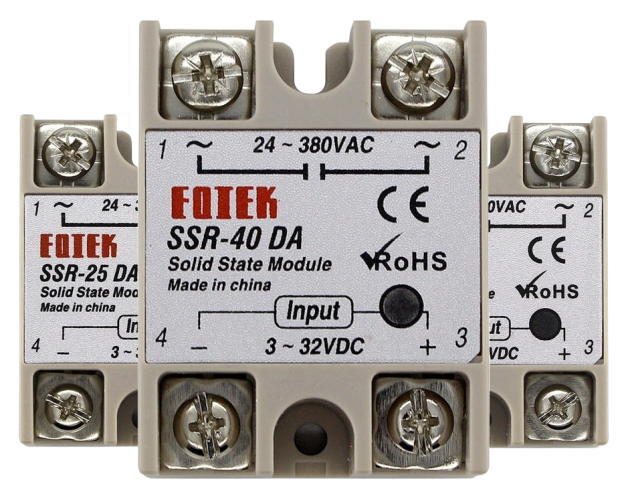Relay purchasing guide
Because selecting a relay can be harder then you’d initially think, below is a list of relays (both normal mechanical and SSR) which should work correctly together with the QuinLED-Dig-Uno and QuinLED-Dig-Quad. Each of these have been tested using 5v power and a 3.3v GPIO signal from the Q1-Q4 pins or a 5.12v signal from the Q1R pin on the pre-assembled Dig-Quad.
To run these relays the pre-assembled Dig-Uno and Dig-Quad’s DC-DC circuit have about 200mA to 300mA available. This means that even if you are running the boards from 12v power or 24v power the onboard DC-DC circuit will make 5v available to run the relay. Using more power might overheat the DC-DC circuit.
Please see the generic relay article and livestream to understand how to hook them up including how to use the (5)vEXT function of the boards which allows connection 2 power supplies, the main LED power supply and the extra standby power supply.
What relay do you need?
What relay you need depends a lot on your situation. If this is for turning off the main large LED power supply all of the below types are suited. If however you want to rapidly turn on/off an AC current for instance a SSR is better for that then a Mechanical relay.
![]()
Mechanical relays
Mechanical relays are relays that have a physical pin that moves when power is applied. Activating the relay and keeping the relay engaged continuously uses power.
1, 2, 4, 6 and 8way simple relay boards
Simple relays good for up to ~10Amp with AC current but more like ~8Amps for DC current.
![]() Simple 1, 2, 4, 6 and 8way relay board (with optocoupler and 3.3v trigger compatible)
Simple 1, 2, 4, 6 and 8way relay board (with optocoupler and 3.3v trigger compatible)
1, 2, and 4way high-power relay boards
Strong 30Amp relays which can handle a lot of current!
Please make sure you select a 5v version!
Relays use about 200mA to 250mA each, recommended to only power 1 off board DC-DC converter)
![]() 1 way 30Amp relay board (High/Low trigger mode, High is compatible with 3.3v, Low is compatible with 5.1v only)
1 way 30Amp relay board (High/Low trigger mode, High is compatible with 3.3v, Low is compatible with 5.1v only)
![]() 2 way 30Amp relay board (High/Low trigger mode, High is compatible with 3.3v, Low is compatible with 5.1v only)
2 way 30Amp relay board (High/Low trigger mode, High is compatible with 3.3v, Low is compatible with 5.1v only)
2 way 30Amp relay board with shielded terminals
These boards are mostly the same as above but they have shielded terminals (little clip that closes) for the large relay terminals. Since you are mostly connecting AC to these terminals this might be a desirable feature. (Aliexpress only)
![]() 2 way 30Amp relay board (Shielded terminals) (High/Low trigger mode, High is compatible with 3.3v, Low is compatible with 5.1v only)
2 way 30Amp relay board (Shielded terminals) (High/Low trigger mode, High is compatible with 3.3v, Low is compatible with 5.1v only)
Solid State Relays (SSR)
Solid state relays differ from mechanical relays in that there is no mechanical part that moves when engaging the relay. Internally it uses a MOSFET or TRIAC (or similar) transistor to enable or disable the flow of power through the module. This also means they use a lot less power vs a mechanical relay and can be switched on/off much quicker. Downside is that when running a lot of power through them they are not 100% efficient and some energy is lost in the form of heat thus when running large current through them a heatsink is advised.
In testing with AC SSR modules running typical LED power supply AC side currents like 2Amps or 4Amps did not require a heatsink on the SSR. This might be different if you are for instance running 20Amps through it using DC.
SSR relays can be purchased as an AC relay or DC relay be mindful to select the right type!
AC SSR Relay module
Simple AC SSR available in 25, 40, 60 and 80Amps. For switching a power supply on the AC side any of those values should work fine.
![]() SSR-40 DA Relay module (Triggers well at 3.3v or 5v)
SSR-40 DA Relay module (Triggers well at 3.3v or 5v)
DC SSR Relay module
These modules can be had from 25Amps up to 150Amps on the DC side! If doing so please use appropriate cable thickness and fork terminals to transfer the current. The SSR will also very likely require a heatsink when used above 10Amps!
![]() SSR-40 DD Relay module (Triggers well at 3.3v or 5v)
SSR-40 DD Relay module (Triggers well at 3.3v or 5v)
![]()
End conclusion
Relays (either mechanical or SSR) can help save a lot of power while your LED install is idle. For smaller installs (unless run off battery) it makes less sense (the investment into the equipment costs more then you’ll ever save) but when running larger installations with big bulky power supplies it can realize a significant reduction in idle wattage, I’ve personally seen a reduction from 20w to 1w for instance.





